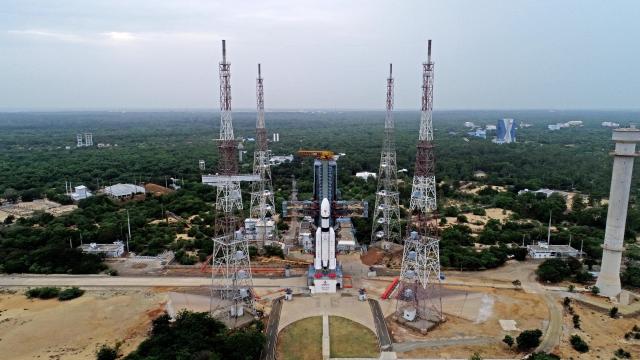India’s Chandrayaan-3 mission is getting closer to the Moon, gradually reducing its altitude above the celestial body’s cratered surface after entering lunar orbit.
The Indian Space Research Organization (ISRO) announced that its third mission to the Moon entered lunar orbit on Saturday after firing its propulsion system to guide it towards an elliptical path around Earth’s natural satellite. ISRO is targeting August 23 for the Chandrayaan-3 touchdown on the Moon’s South Polar region, hoping that the space agency’s second attempt to achieve lunar touchdown is a success.
Chandrayaan-3 launched on July 14 from the Satish Dhawan Space Centre on board India’s Launch Vehicle Mark-3 (LVM3) rocket. Its launch revived India’s dreams of landing on the lunar surface and joining a small group of countries who have been able to accomplish that goal: the Soviet Union, the U.S., and China.
Chandrayaan-3 is India’s third mission to the Moon and the country’s second attempt to land there. India’s first attempt at a landing didn’t go so well: Chandrayaan-2 crashed on the Moon in September 2019 due to an issue with its braking thrusters.
Since then, ISRO has spent some time developing Chandrayaan-3 to achieve a soft landing on the Moon. The spacecraft is inching closer, reducing its altitude above the lunar surface to 105 by 2,679 miles (170 by 4,313 kilometres), according to ISRO. The space agency will carry out several orbital reduction maneuvers over the next two weeks, bringing the spacecraft closer to the surface during its elliptical orbit before the attempted lunar landing.
Chandrayaan-3’s propulsion module carried its lander and rover to lunar orbit while the lander-rover pair will attempt the landing, carrying six scientific instruments to gather data from the surface. The main goal of the mission is to demonstrate the ability to place the lander and rover on the surface and operate them for about one lunar day (14 Earth days), using onboard instruments to gather data and help develop new technologies for interplanetary missions.
For more spaceflight in your life, follow us on Twitter and bookmark Gizmodo’s dedicated Spaceflight page.
